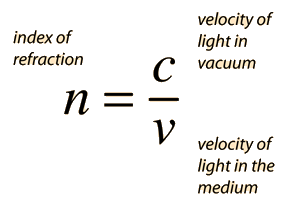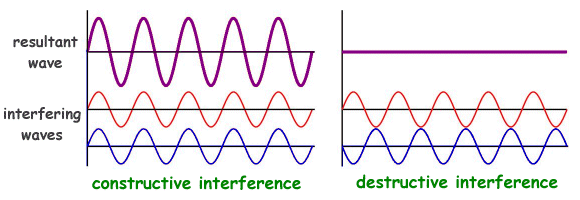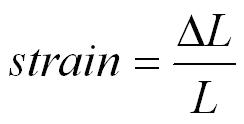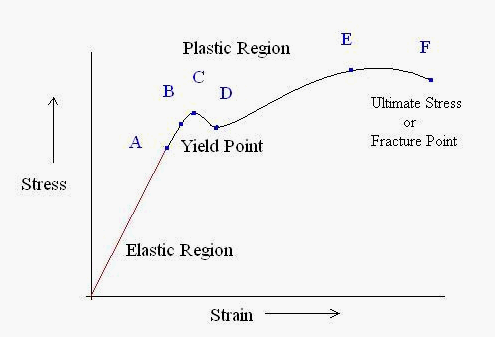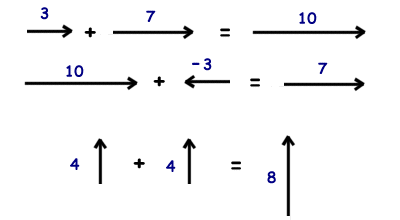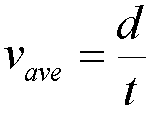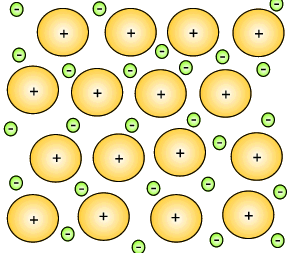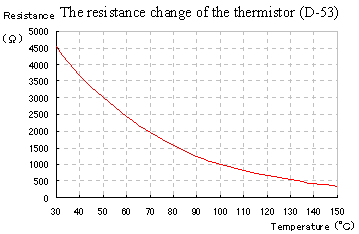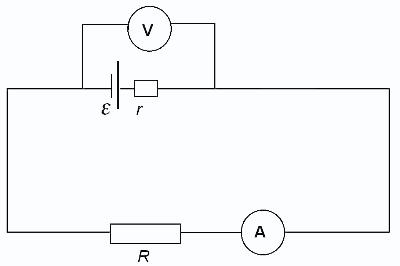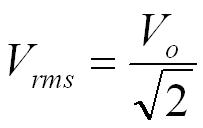Oscillation - When a stretched spring is vibrated at one end, the oscillations are transferred along the spring in the form of a progressive wave.
Amplitude - the maximum displacement from equilibrium caused by a wave - from the middle of the wave to the peak or trough
Frequency - the number of waves that pass a certain point in one second. The unit is the hertz, Hz. A frequency of 1 Hz is one wave per second.
Wavelength - the distance between two identical consecutive points on a wave. It is measured in metres. We can define it as:
Wave speed - the speed of a mechanical wave depends on the properties of he medium which it travels through. It is the rate at which a wave passes a certain point in a certain time frame.
In phase - when two points (eg. like A and A' on the graph above) are oscillating in time with each other.
Out of phase/anti-phase - when two points (eg. like A and B) are oscillating at different times
Phase difference - The difference in length between 2 points on a wave - eg. there is a phase difference of π between A and A'
Path difference - The difference in length between 2 different waves.
Longitudinal and Transverse Waves
Longitudinal waves have vibrations that are parallel to the direction in which the wave is travelling (created by compressions and rarefactions). An example of longitudinal waves is sound, where air molecules vibrate backwards and forwards parallel to the wave's travel.
Transverse waves have vibrations that are perpendicular to the direction of propagation. An example of this are light waves. Electromagnetic waves are also transverse waves, however they are not vibrations of particles, but are oscillating electric and magnetic fields.
Transverse Waves
Electromagnetic Waves
A transverse wave has oscillations in a plane that is perpendicular to the wave's velocity. However, these oscillations could be in any direction in that plane. The electric field in a light wave, for example can oscillate in any direction in that plane. Such a wave is said to be unpolarised.
We are able to restrict the oscillations of the electric field in an electromagnetic wave to one direction only - we can then say that the wave is polarised.
Radio waves that are used to carry TV signals are transmitted as horizontally or vertically polarised waves. Neighbouring transmitters may emit waves of opposite polarisations. This reduces interference between the two signals.
It is possible to polarise light by passing it through a sheet of polaroid. Two sheets of polaroid that are perpendicular to each other will block off all of the light. Since reflected light is partly polarised, polaroid sunglasses can reduce the glare from reflected light.
Refraction at a Plane Surface
The change of direction when a wave moves from one medium into another is called refraction - eg. when light travels from air through a window, the medium changes from air to glass.
The refractive index of a material is the ratio of the speed of light in a vacuum to its speed in the material.
Light always travels faster in a vacuum compared to any other medium, and so the absolute refractive index is always greater than 1. As it is a ratio, there is no unit.
Materials which a high value of refractive index are said to be optically dense.
Snell's Law of refraction states:
Total internal reflection is when a ray of light, leaving an optically dense material and travelling into a less dense one, is not refracted out of the dense material but is totally reflected back inside.
Total internal reflection occurs when the light ray is moving from one medium to another in which the speed of light is greater, and the angle of incidence is greater than the critical angle.
We can calculate the critical angle by the following:
Scratches can also affect the signal, and one way of preventing this is to use cladding which provides an outer layer to protect the inner fibre. The cladding is made from a glass of lower refractive index so that total internal reflection can still occur.
Optical fibres are also used in endoscopes and medical situations.
Superposition of waves, Stationary waves
When two similar waves meet, the resultant wave depends on the amplitude and the relative phase of the two waves. When two identical waves meet, the amplitude of the resultant wave is double if they are in phase, however if they are out of phase, they will cancel out.
Waves that form a resultant wave with twice the amplitude create constructive interference, whereas waves that cancel out each other create destructive interference.
The principle of superposition says that the resultant displacement caused by two waves arriving at a point is the vector sum of the displacements cased by each wave at that instant.
When two continuous similar waves are travelling in opposite directions, they can superpose to form a stationary wave. A stationary wave is a fixed pattern of vibration. Unlike a progressive wave, no energy is transferred along the wave.
There are several points on a standing wave which do not vibrate at all called nodes. At a node, the waves travelling in opposite directions add together to give zero displacement. The distance between two nodes is always half a wavelength. In between each node is a point of minima or maxima, known as antinodes.
All the points between any two nodes vibrate in phase, whereas in a progressive wave the phase changes with position along the wave.
The simplest way that a string can vibrate is with one antinode in the middle of the string. This wave pattern is known as the fundamental mode. The frequency of this fundamental mode is given as:
The fundamental mode
Waves that always have the same phase difference have coherent sources.
For a maximum: path difference = nλ, where n is a positive integer
For a minimum: path difference = 2n+1 lλ/2 where n is a positive integer
Two Slit Interference
We aren't able to arrange two separate coherent light sources, as the light from each source is emitted in random bursts.
Instead a single laser can be shone through two slits, as a laser light is coherent and monochromatic, with only one wavelength present.
The slits have to be narrower than the wavelength of the laser light so that it is diffracted then the light from the slits is equivalent to two coherent point sources.
A pattern of light and dark fringes are formed, depending on whether constructive or destructive interference occurs.
The light bands occur whenever the path difference between light waves from the two slits is a whole number of wavelengths. The distance between two successive maxima depends on:
-The distance between the two slits. Increasing the distance makes the interference fringes closer.
-The wavelength of light. The fringes are closer together if the wavelength is shorter.
-The distance between the slits and the screen. If we observe the interference pattern at a greater distance, the fringes spread out more.
They can be linked by the formula:
where w is the distance between 2 maxima (m), lambda is wavelength (m), D is distance between the slits and the screen (m), and s is the distance between the two slits (m)
Laser light is monochromatic - all the light is emitted at a single wavelength
Laster light is coherent - the light waves emitted by the laser are all in phase, whereas light from an ordinary light bulb is emitted with random phase differences.
Laser light beams are highly directional - the beam emitted by a laser diverges very little, whereas the light from a lightbulb is emitted in all directions.
Diffraction
When waves pass through a gap, or travel past an obstacle, the waves spread out. This is known as diffraction. Diffraction is a phenomenon common to all types of waves.
The diffraction pattern from a single slit has a pattern of bright and dark fringes. There is a broad, bright central maximum with narrower, less bright secondary maxima on either side. More diffraction occurs if the wavelength increases in length and the gap size decreases.
A diffraction grating is a series of narrow parallel slits usually formed by ruling lines on glass. When light shines on the diffraction grating, a set of bright sharp lines are seen. We can derive an expression to calculate the directions in which these maxima will occur.
If a bright fringe to occurs, the follow equation is valid:
were d is the slit separation (m), theta is the angle between the two lines (degrees), n is the path difference
where n is an integer
The first maximum will occur when n =0, i.e. when there is zero path difference. This is the straight through position and is referred to as the zero order maximum.
Diffraction gratings are useful for analysing light from far away planets and stars and enables astronomers to determine elements present, temperatures and speeds of objects.





